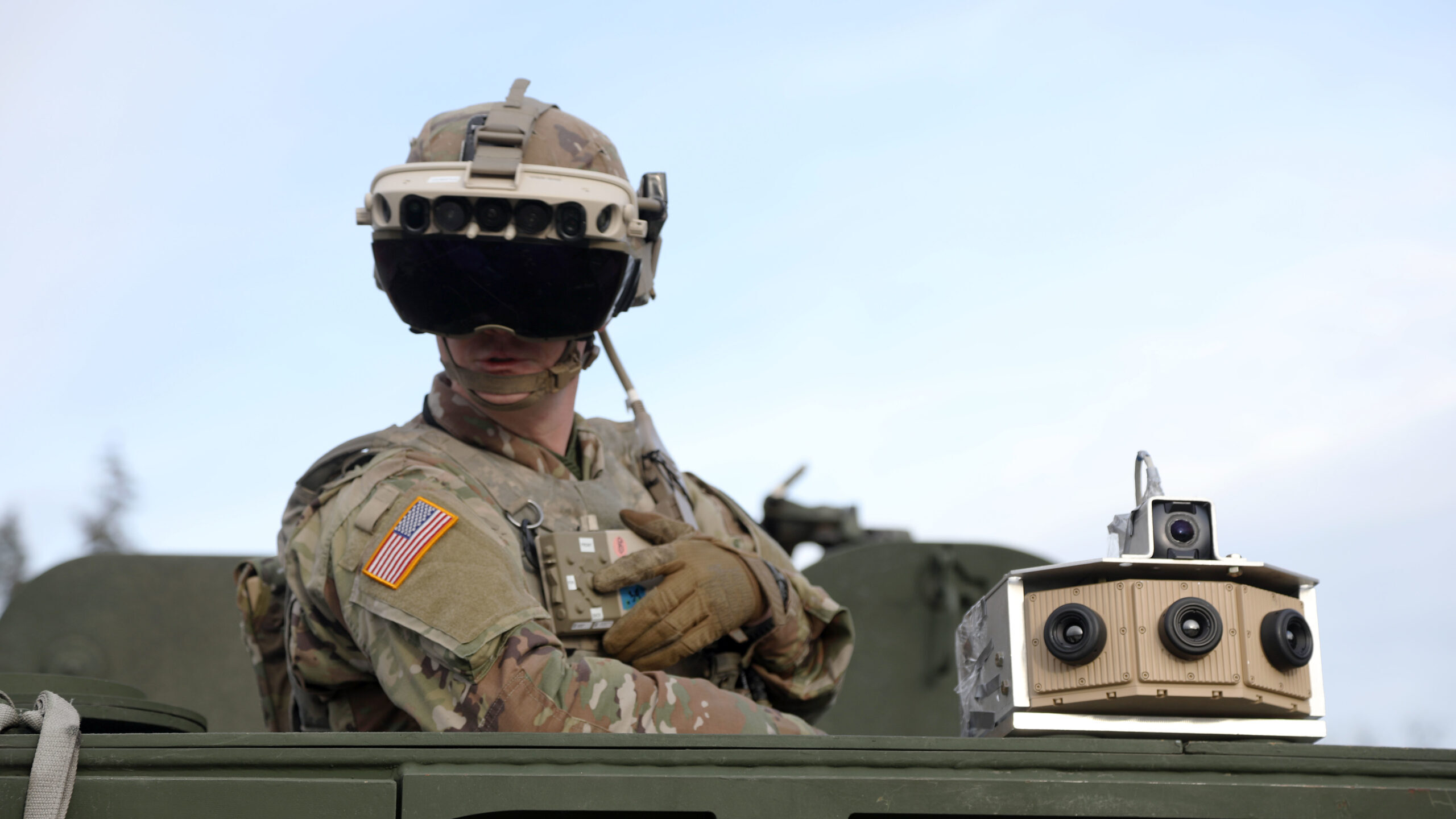
Soldier dons the Integrated Visual Augmentation System Capability Set 3 hardware while mounted on a Stryker in Joint Base Lewis-McCord, WA. (DVIDS)
WASHINGTON: The Army has delayed the operational test and fielding of its futuristic warfighting goggles by several months, the service announced today, in the latest development for the $20 billion-plus program.
The operational test for the Integrated Visual Augmentation System, was scheduled for the fourth quarter of fiscal 2021, but will now occur in May 2022. That delay pushes back its first unit equipped date target to September 2022.
The IVAS program would provide soldiers with high-tech goggles that are designed to give soldiers increased situational awareness on that battlefield via superimposed visual info. The Army awarded Microsoft a five-year contract worth up to $21.88 billion in March this year for a militarized version of the tech giant’s HoloLens augmented reality goggles.
The announcement of the new delivery timeline from Program Executive Office Soldier, which runs the IVAS program, didn’t give a specific reason for the delay, which was first reported earlier this week by Janes.
“The Army is fully committed to its partnership with Microsoft to advance specific technologies to meet operational requirements and maximize warfighter impact,” the announcement said. “This decision allows the Army and Industry team to continue to enhance the IVAS technology platform ensuring Soldiers achieve overmatch in Multi Domain Operations.”
Last month, the service completed an adversarial electronic warfare and cybersecurity test, the announcement said. PEO Soldier said in its release that it “plans to execute testing regularly throughout FY22.”
Earlier this month, the Department of Defense inspector general announced an audit of the IVAS program. The public announcement of the audit states that the watchdog is working to “determine
whether Army officials are producing and fielding Integrated Visual Augmentation System units that
meet capability requirements and user needs.”
Should the tech work as intended, soldiers would receive a range of new capabilities from IVAS, including a heads-up display of tactical data, such as friendly units or objectives. It also includes targeting cross-hairs linked to a smart sight on their weapon, among others.
“We appreciate the close partnership we have with the U.S. Army and look forward to ongoing iteration with IVAS and the Soldiers using it,” a Microsoft spokesperson said.






















